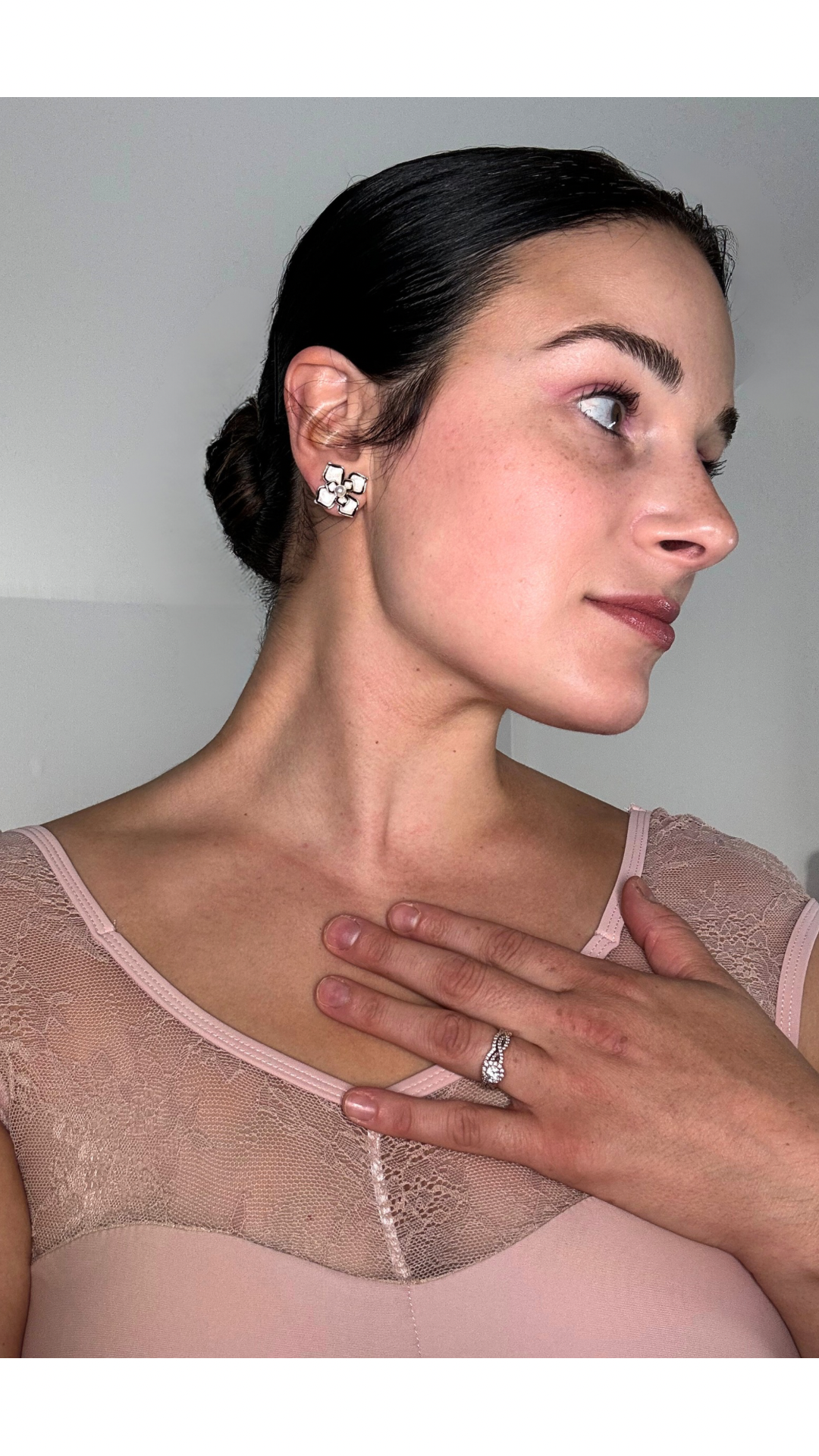Do you want stronger ballet arms?
- Veronica K

- Dec 7, 2019
- 3 min read
Updated: Jul 12, 2022

As dancers and dance instructors, we end of placing a great emphasis on creating long beautiful lines and the highest extensions possible.
When I was a dance student, often times our focus was more on stretching rather than strengthening to obtain these goals. While “bulking up” is never the goal of a dancer and could even restrict them from reaching optimal extensions, there must be a balance between stretching and strengthening to keep dancers at peak performance.
Today, my focus is on how more focus should be placed on upper body resistance training in the dance classroom. We are all aware that our dancers have this upper body deficiency. We give our students corrections such as “don’t round your shoulders,” “move your arms from your back,” “no droopy port de bras,” “lengthen your arabesque arms.” The list can go on and on.
Unfortunately, many dancer who will receive these corrections will not understand how to correct these postural deficits longterm. We cannot assume are students are going to know which muscle groups to strengthen and stretch to get effective results.
So let’s first talk about endurance vs. strength. Endurance is the capability to sustain a muscular contraction for a prolonged period of time while strength is the amount of force that someone can produce against a given amount of resistance. That being said, as dancers we have no need to go and perform high weight resistance exercise that a bodybuilder or powerlifter may endorse. Conversely though, we need to use resistance training to improve our postural endurance.
Posture in general is meant to be maintained throughout the day. Incorporating the mindset to our dancers that they should be practicing posture not only inside but also outside the classroom will be integral to applying the corrections and making real life long changes.
In general, some muscle groups I see lacking the most endurance in dancers upper body include:
-Middle trapezius
-Deltoid (anterior, middle, and posterior)
-Teres minor
-Triceps brachii
-Biceps brachii
-Rhomboid major
So what can we do to solve this lack of strength and endurance that is evident in the upper body? Simple; progressive resistance exercises and a consistent routine for dancers to practice at home. You should also educate your students that by staying consistent to a strengthening program they are not only helping their dance performance but, could possibly prevent against chronic conditions caused by postural deficits.
Exercises I use to help my students with their upper body strength include:
-External rotation with resistance bands
-Shoulder extension with tubing
-Scapular clocks
-Standing or bent over rows
-Tricep kick backs
-Bicep hammer curls
-Port de bras with 1-2 lbs ankle weights at the wrists or dumbells
-Prone lying W’s
Typical tightness patterns that I observe accompanying these weak muscle groups include:
-Pectoralis minor
-Upper trapezius
By stretching these muscles groups, this will further allow strengthened muscles of the upper quadrant to hold the shoulders in optimal alignment.
Again, I do not expect every dance educator or performer to start powerlifting.
However, I do hope that it inspires or enlightens you on the importance of a consistent upper body resistance routine.
As a result of improved upper quadrant strength and endurance, we will yield the results of improved posture in standing, improved mechanics of port de bras, and greater endurance when holding static positions.
I have designed a step-by-step course just for you in order to obtain these goals. Make sure to check out the arms and port de bras course located in the VK Dancer Cross-training platform.
Click here to learn more about all the membership options and start working in the dancer arms course today!




Comments